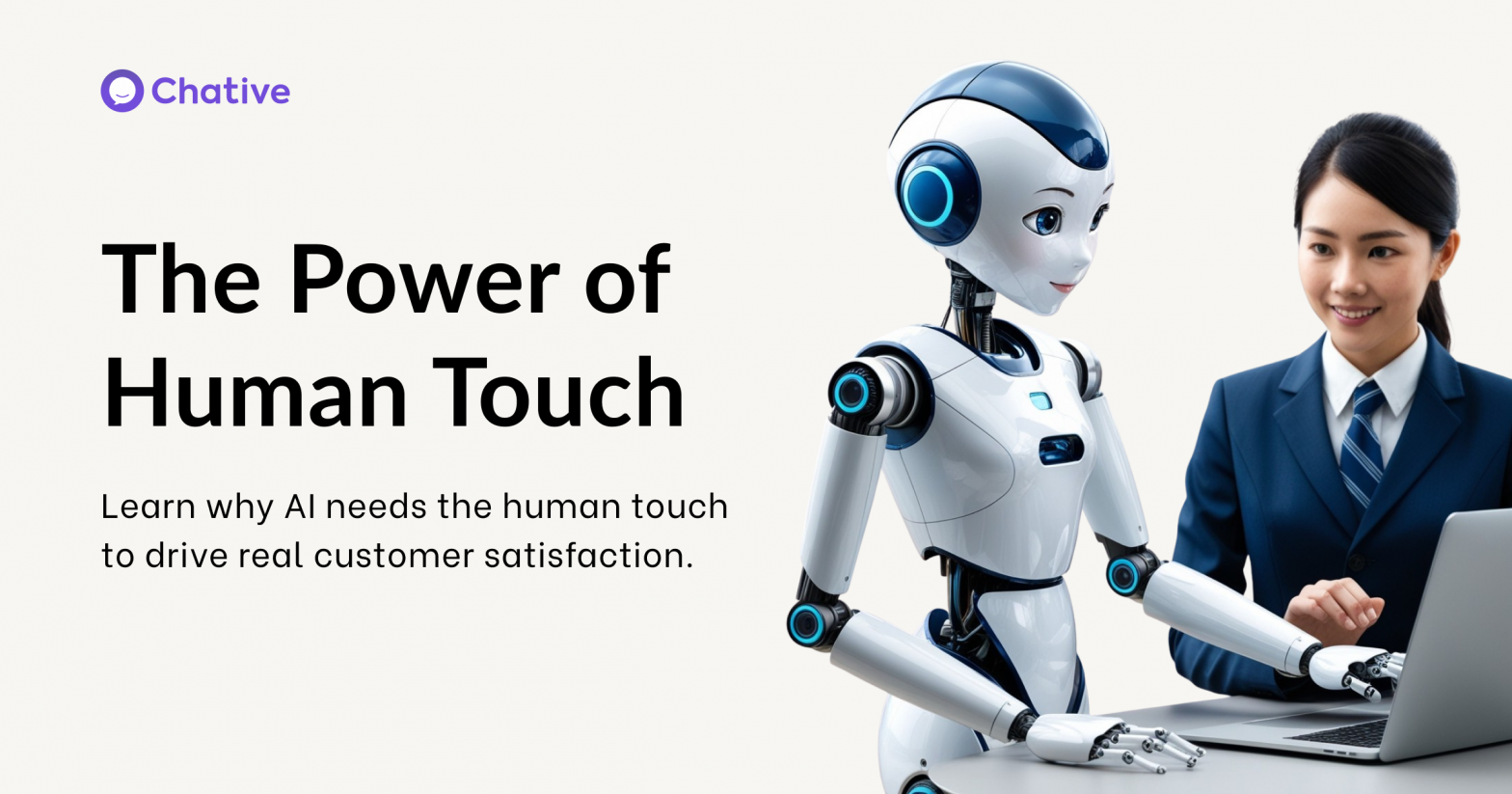In e-commerce, AI is becoming a key factor in optimizing customer service processes. According to a survey by PwC, 73% of businesses have adopted AI in their operations, particularly in automated customer service.
But what makes the real difference? It’s the combination of AI chatbots and human interaction. Together, they deliver a personalized and authentic customer experience.
While AI can answer thousands of questions at once, customers still seek empathy and connection from humans, especially in complex situations.
Thus, combining AI and human touch is the key for businesses to enhance customer experience and retain them in the long term.
The Importance of the Human Touch
Customers Expect Personalization
Today’s customers want to be treated uniquely. According to Accenture, 91% of customers prefer brands that recognize them and communicate in a personalized way. This means it’s not just about sending an automated thank-you email. Customers want to feel that the brand truly understands and meets their needs.
In automated customer service, AI has the ability to collect and process information very quickly, but the difference lies in the empathy and connection provided by customer service agents. AI chatbots can be helpful, but human touch is what truly delivers personalized and high-quality experiences.

Customer Demands are Increasing
Remember when customers used to just “browse and buy”? That’s a thing of the past! Today’s shopping behavior is much more complex. Customers may search for information on a website, read reviews on social media, and compare prices before making a purchase decision.
Their demands go beyond finding and buying, as they also expect accuracy, speed, and – most importantly – personalization at every step of their journey. This is why combining AI for speed with the human touch is essential.
AI helps capture data, but it’s the customer service representatives who turn that data into memorable experiences.
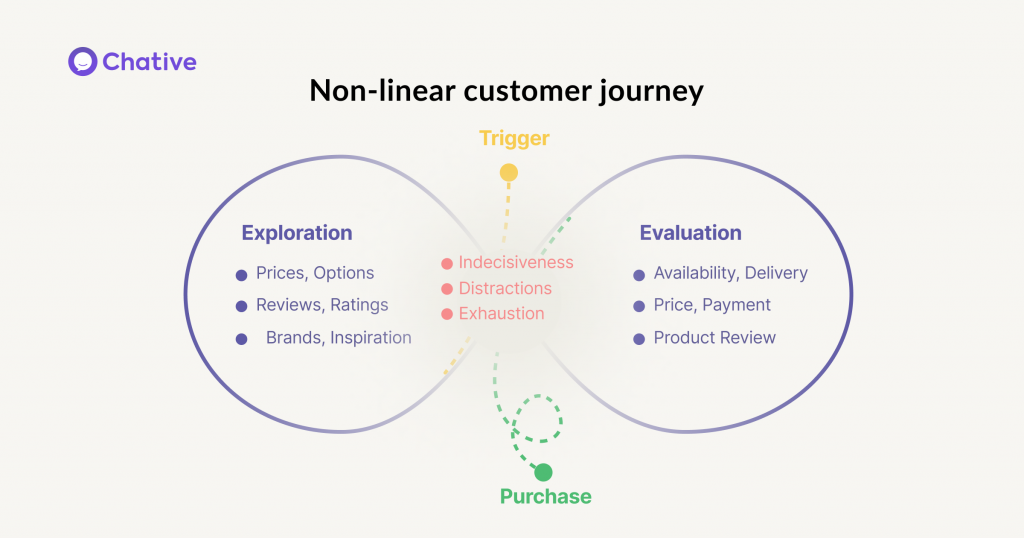
Building Brand Trust
Trust is a deciding factor when customers make a purchase. The combination of AI and human touch is the key to building trust.
When AI operates flexibly with a human-centered approach, the customer service process becomes not only quick but also genuinely caring. AI provides accurate information, while humans offer empathy. This makes your brand not only more effective but also more trustworthy in the eyes of customers, strengthening long-term loyalty.
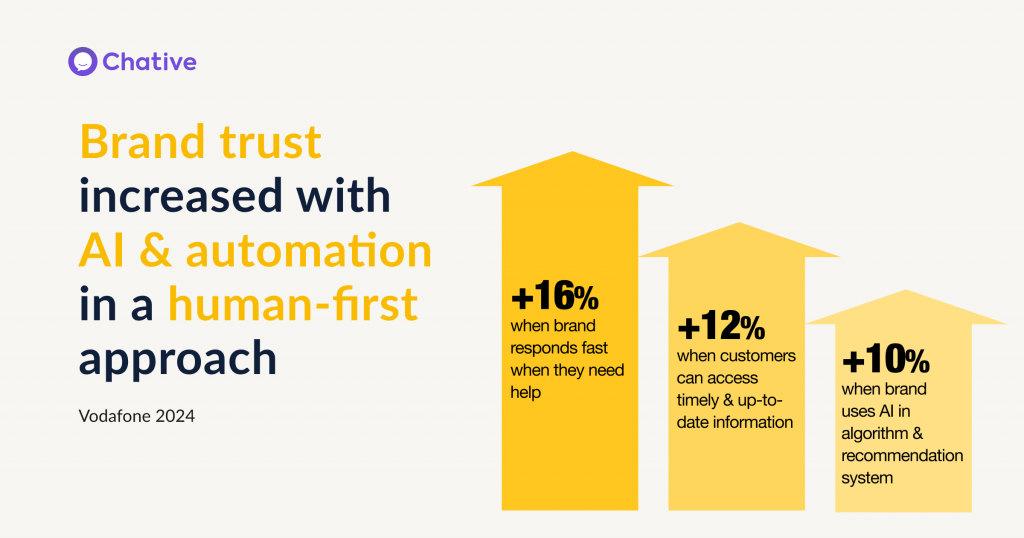
AI as a Support Tool, Not a Replacement!
AI is a smart assistant. It helps analyze data, offer suggestions, and automate repetitive processes. However, the human touch remains key to creating real connections.
This is especially important in complex situations, which require sensitivity and emotions.
Examples:
- Summarizing requests: Instead of reading through long chat histories, AI can quickly summarize past interactions, helping agents grasp the issue faster.
- Suggest smart responses: When customers ask questions, AI suggests appropriate responses for customer service agents, speeding up reply times without requiring extensive thought.
- Automatic updates: If a customer changes their address or phone number, AI can update the details automatically without manual entry.
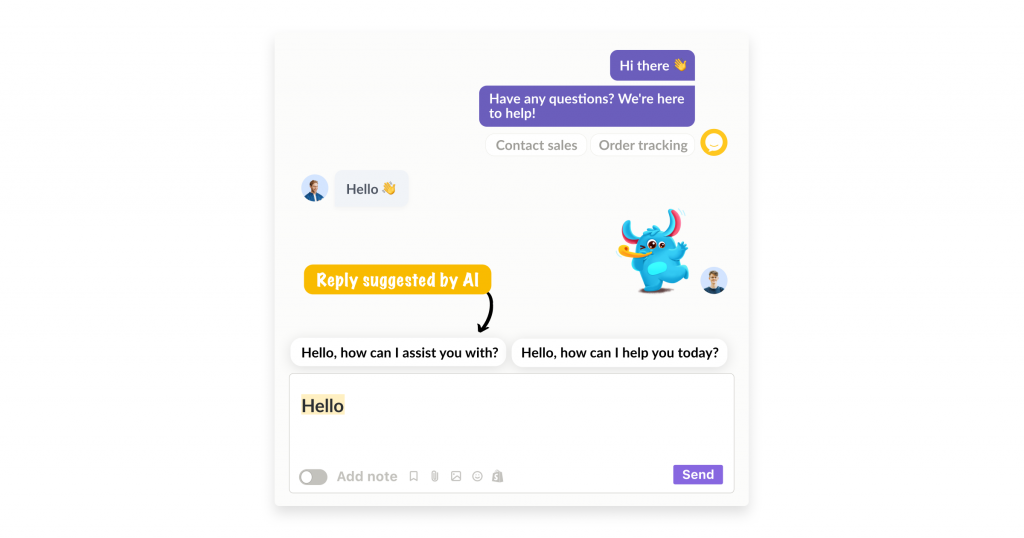
Moreover, AI can handle tasks like scheduling appointments or answering frequently asked questions, allowing you to focus on more important matters.
Examples:
- Auto-learning: AI can automatically update and respond to customers using information from your store or content provided by your business.
- Understand customer preferences: AI doesn’t just know basic information but also understands the preferences and shopping behaviors of each customer thanks to data like shopping carts and purchase history, helping suggest the most suitable products or services.
- Automate task handovers: If AI can’t resolve an issue, it will escalate it to a human without disrupting the process.
- Deep integration with workflows: AI doesn’t work independently, but can integrate closely with existing business processes, helping everything run more smoothly.
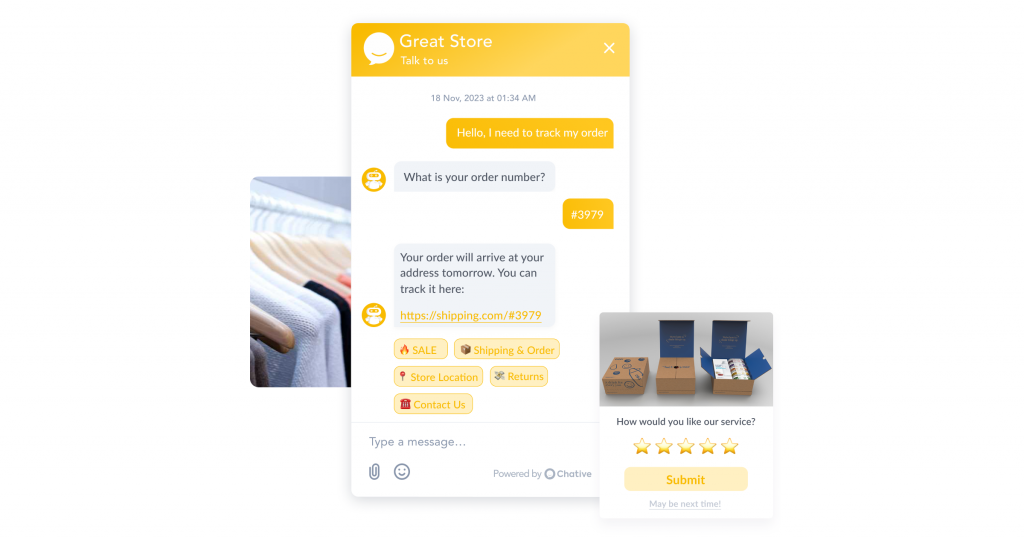
AI in Customer Service: Real-World Examples
Integrating AI into customer care processes not only helps optimize time but also provides customers with a faster and more personalized experience. Below are two cases from major brands that have successfully used AI in customer service:
- H&M: Implemented a chatbot on their website and mobile app to assist customers in finding products, checking stock status, and getting clothing recommendations. This integration reduces customer wait times, allowing staff to focus on more complex issues.
- Sephora: Uses a chatbot on Facebook Messenger to provide beauty advice, schedule makeup appointments, and suggest products based on skin type. This approach not only enhances the shopping experience but also boosts online sales, creating a modern and convenient customer service model.
AI in Shopping: The Future and the Necessity of Human Touch
It’s undeniable that AI will continue to advance and gradually replace many aspects of the shopping process. From product recommendations and order processing to customer service, AI will play a more prominent role than ever. However, even in a future where AI can handle most tasks automatically, the human touch will remain irreplaceable.
Trust and Personal Connection
While AI can accurately predict preferences and suggest products, human interaction creates the personal connection and trust. For example, feedback from staff not only provides information but also offers the understanding and empathy that AI cannot fully replicate.
Retaining Customers in the Age of Automation
As AI becomes more common, customers may feel that their connection with brands is becoming increasingly “robotic.” Combining AI with human touch is the way to keep them engaged. This ensures that customers feel the brand still cares and understands them.
In the modern e-commerce era, integrating AI deeply into the shopping process is unavoidable, from automating product recommendations and order processing to optimizing the shopping journey. AI can work quickly and efficiently, but it’s the subtlety and empathy from humans that build customer loyalty and trust in the long run.
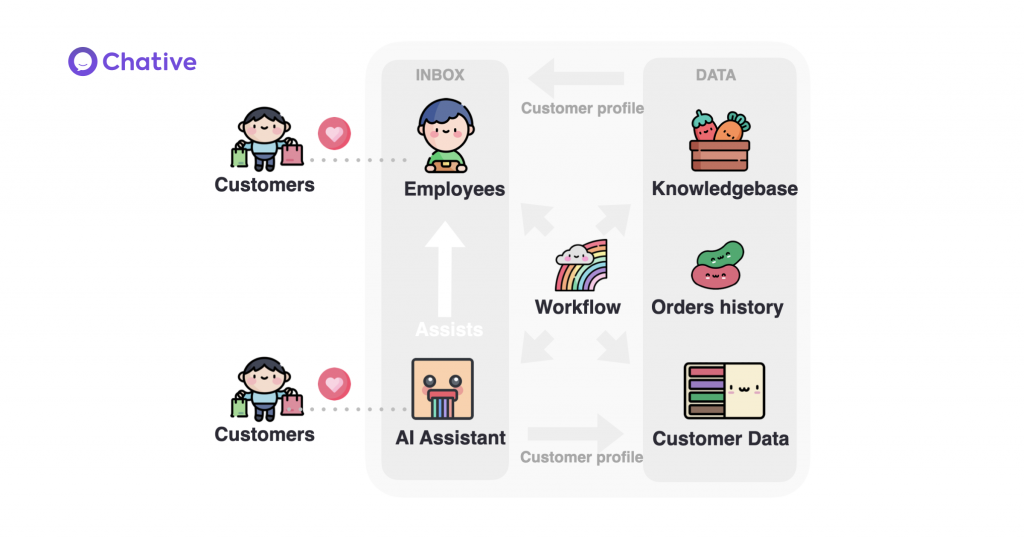
Conclusion
AI is a powerful tool. It helps people work more efficiently. However, to create a memorable customer experience, the combination of AI and the human element is necessary.
AI handles issues quickly and efficiently, but the emotional connection and understanding from humans create a personalized experience for customers.
Instead of trying to have AI replace humans entirely, businesses should use AI as a support tool, allowing employees to focus on more important tasks.
